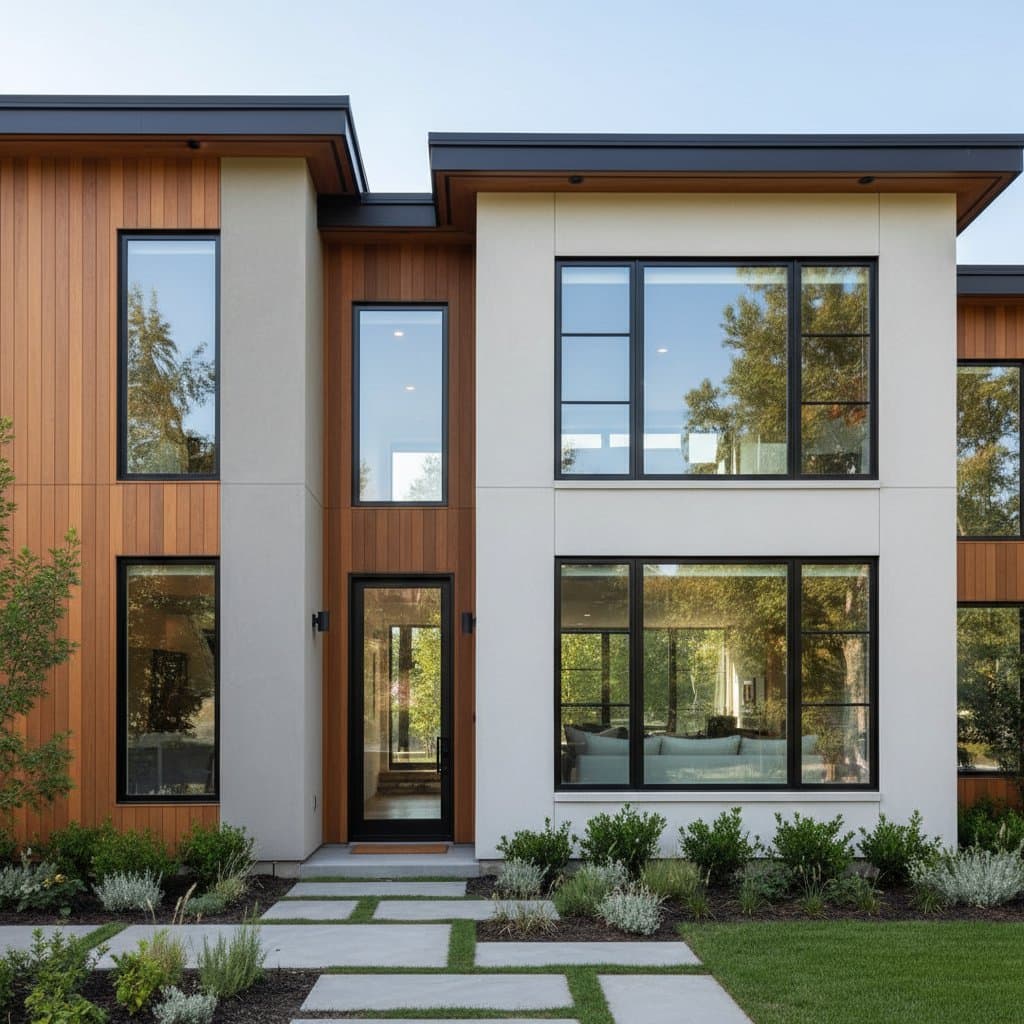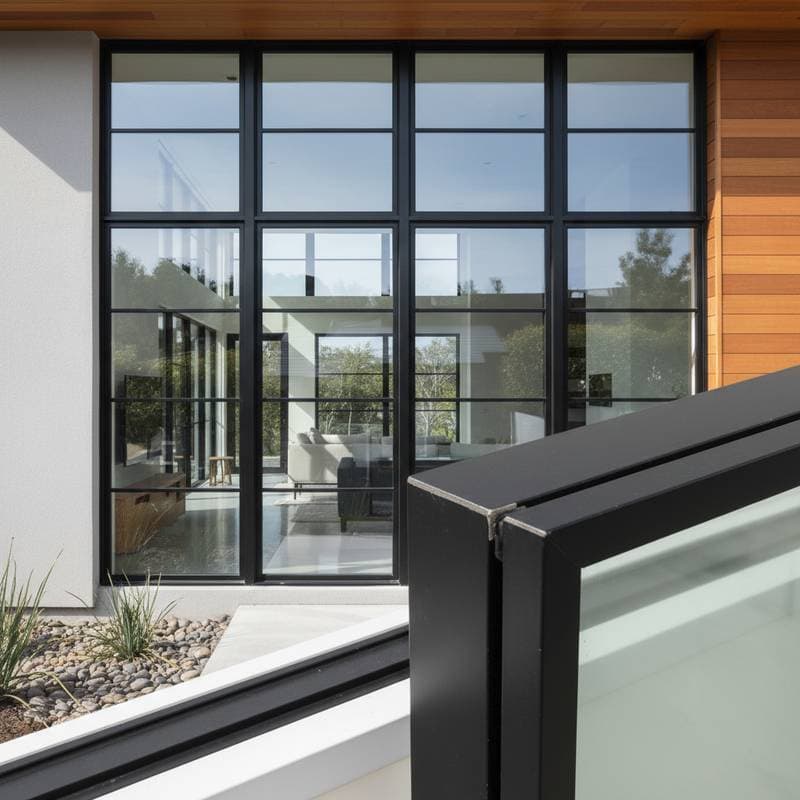Why Prioritize Windows Before Solar Panels for Optimal Performance
Homeowners frequently view solar panels as the primary path to energy independence and reduced utility expenses. However, the most critical element for optimizing solar benefits originates within the home rather than on the roof. The order of renovations proves essential. Completing window replacements ahead of solar installations substantially enhances energy performance, system efficiency, and enduring cost reductions. This method establishes a robust building envelope, enabling solar power to offset a diminished and more efficient energy demand.
The Link Between Windows and Solar Efficiency
Windows influence the transfer of heat and light throughout a residence. Dated or inadequately sealed units permit conditioned air to escape while allowing solar heat to infiltrate uncontrollably. Consequently, the home requires greater energy for heating and cooling. Sizing solar panels to accommodate this elevated demand results in a larger, costlier system.
Addressing windows with energy-efficient options alters this dynamic. Contemporary glass coatings, insulated frames, and secure seals lower the home's total energy use. With reduced needs, the solar array can shrink in scale yet fulfill household demands. This progression not only curtails upfront costs but also directs generated watts toward productive application instead of inefficiency.
Three Strategies for Achieving Desired Appearance and Efficiency
Budget-Friendly Strategy ($6,000 - $9,000)
- Select double-pane vinyl windows featuring low-emissivity coatings to block heat transfer.
- Target replacements in high-exposure areas first, including south- and west-facing windows that receive intense sunlight.
- Forego decorative grids and custom colors to control expenses, while allocating funds to superior weatherstripping for enhanced insulation.
Moderate Investment Strategy ($10,000 - $15,000)
- Choose fiberglass or composite frames paired with argon-filled glass for superior thermal performance.
- Incorporate a combination of fixed and operable windows to enable ventilation without compromising energy retention.
- Opt for neutral exterior finishes that harmonize with current siding and trim, promoting a seamless visual integration.
Premium Investment Strategy ($18,000 - $25,000)
- Deploy triple-pane windows equipped with warm-edge spacers and advanced coatings for peak insulation.
- Upgrade to aluminum-clad wood frames, blending longevity with elegant architectural details.
- Integrate new windows alongside high-efficiency patio doors and exterior shading solutions to regulate solar gain with precision.
Guidance on Materials and Finishes
- Windows: Black or bronze frames offer sharp contrast and contemporary style. For classic residences, white or cream finishes maintain enduring elegance. Pair with hardware in matte black or brushed nickel to achieve refined coordination.
- Doors: For entry systems, insulated fiberglass models with limited glass provide robust weather protection. Sliding or French doors featuring energy-rated glazing align with refreshed windows, ensuring uniform efficiency.
- Siding: Light gray, warm beige, or off-white siding complements dark window frames effectively. In modern settings, fiber cement panels in subtle charcoal or slate deliver a harmonious, efficiency-oriented look.
- Trim and Accents: Employ straightforward, color-matched trim to outline windows neatly. Steer clear of elaborate decorative elements that could complicate window flashing or solar conduit placement.
Practical Maintenance Considerations
Newly upgraded windows demand far less maintenance than traditional wood varieties. Vinyl and fiberglass materials resist warping and discoloration, requiring only gentle soap and water for routine cleaning. Aluminum-clad wood frames necessitate periodic checks of seals and painted areas, yet they provide decades of reliable service with appropriate care. By minimizing drafts and moisture entry, these windows safeguard interior surfaces and HVAC systems from excessive strain. Such enhancements indirectly prolong the lifespan of solar equipment through consistent indoor climate control.
Common Pitfalls to Avoid
- Overlooking window upgrades prior to solar setup: Post-panel installation, reaching roof edges or upper-level frames grows challenging. Finishing windows first prevents the need for panel removal or service disruptions.
- Scaling the solar array excessively: Planning without prior efficiency improvements inflates costs and extends return on investment. Re-evaluate consumption post-window installation before determining solar specifications.
- Neglecting ventilation requirements: Highly sealed homes risk accumulating heat or humidity absent adequate airflow. Incorporate operable windows or supplemental mechanical systems to sustain comfortable indoor conditions.
Integrating Design and Functionality
Efficiency upgrades must align with aesthetic goals to preserve exterior allure. Current window designs accommodate extensive customization, suiting diverse architectural profiles. Success depends on harmonizing streamlined visuals with practical features that support solar integration.
Aligning Colors and Styles
A unified facade heightens property value and reflects superior workmanship. Apply this palette for equilibrium in design and operation:
- Frame Color: Black or bronze to introduce depth and definition.
- Siding Tone: Warm gray or sand as a versatile base.
- Trim: Soft white or light taupe to accentuate window outlines.
- Door Accent: Deep navy or forest green for distinctive flair.
- Roof and Panel Harmony: Matte black panels blend effortlessly with darker frames and neutral siding, forming a fluid visual flow.
Consistent finishes across windows, doors, and solar hardware maintain exterior cohesion. Limit metallic variations to prevent visual clutter and preserve focus.
Sequencing the Installation Process
Effective projects start with thorough preparation and collaboration. Prior to engaging contractors, compile the following:
- Exterior photos capturing all property angles.
- Assessments of window states, frame compositions, and indicators of air or water infiltration.
- Evaluations of roof configuration and shading, identifying barriers such as chimneys or foliage.
- Applicable local codes or community association rules.
- Defined budget allocations for window and solar components.
These records facilitate alignment between window and solar specialists on logistical matters. Window work typically entails scaffolding, trim modifications, and flashing enhancements that influence subsequent solar placement. Addressing windows initially secures a sealed envelope primed for panels.
Implementing the Efficiency Progression
- Secure and Insulate: Fresh windows eliminate leaks and steady interior temperatures.
- Evaluate Energy Demands: Diminished heating and cooling loads reduce necessary solar capacity.
- Deploy Solar Panels: Optimized demands allow panels to function at higher efficiency levels.
- Track Outcomes: Utilize smart inverters and monitoring tools to observe live production and usage, validating the window-precedent method.
This progression yields a stable system that operates dependably while generating ongoing savings.
Realizing Comprehensive Home Improvements
Initiating with window replacements before solar investments transforms both aesthetics and functionality. This tactic fuses visual enhancement with quantifiable efficiency advancements. Improved windows curb energy loss, elevate exterior refinement, and prepare optimal settings for solar effectiveness. Synchronizing materials, finishes, and schedules guarantees that each component advances both style and utility.
Homeowners pursuing integrated beauty, livability, and self-sufficiency benefit from this deliberate sequence. Start with windows that bolster insulation and design unity, followed by solar panels that harness energy with precision. Such orchestration achieves a holistic exterior renewal that excels in appearance and operation alike.






